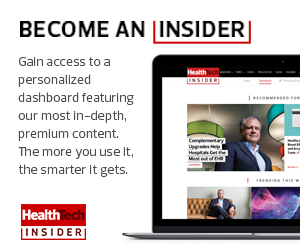The coronavirus pandemic has put a heightened focus on the duty of health plans, healthcare providers and public health agencies to serve as trusted resources during a rapidly evolving emergency situation.
Familiar tools — including chatbots, texting and virtual care platforms — can cut through the noise by enabling organizations to tailor messaging based on an individual’s preferences and needs.
They can also empower patients and boost engagement to improve outcomes and avoid harm.
During a crisis, when fear and uncertainty can overshadow facts, technology-enabled outreach must be personalized and relevant. Execution will require planning and pivots, but there’s benefit beyond addressing immediate concerns: increased loyalty and awareness of digital wellness options as normalcy returns.
Health organizations can increase the likelihood of successful messaging when they prioritize members’ preferred methods of communication, which may include multiple channels.
Know Your Audience to Create Real Value
Understanding the usability needs and habits of various demographics is key when strategizing an approach. We have found, for example, that Medicaid populations most frequently respond to texts and phone calls.
The recent federal announcement of expanded telehealth benefits for Medicare users amid COVID-19 offers a big opportunity to reach vulnerable older adults. And while younger people may be more apt to query chatbots for retail or travel assistance, the automated tools also could help hospitals detect symptoms and direct care without a face-to-face visit.
In addition to addressing real-time concerns, emergency communications also should include a forward-looking component to help members think beyond immediate circumstances to address long-term health and safety.
Consider how one health plan recently prepared by delivering early medication refill reminders to members in several Southeastern states who lived near a hurricane’s expected path. By identifying members with chronic conditions who were likely to run out of medications within two weeks, the health plan was able to contact more than 800,000 members within 48 hours to assist before evacuations were expected.
The COVID-19 pandemic will undoubtedly place a higher premium on digital communication tools to aid knowledge sharing and healthcare delivery — value that isn’t going away.
READ MORE: Why telehealth solutions are vital in a disaster.
Follow Best Practices to Communicate Clearly
Healthcare providers and health plans must consider the following guidelines, regardless of the situation at hand:
- Target specific, distinct member populations with appropriate messaging that reinforces national and local messages from credible sources.
- Prepare responses for common post-emergency questions, such as inquiries regarding access to healthcare, roadways, food and water.
- Keep a consistent message and tone across all platforms and technologies, including social media, patient portals, text, video chat and more.
- Treat crisis communications as one part of a larger, more comprehensive engagement program. People who have received appropriate messaging in the past are likelier to engage in the future.
Above all, be prepared to deliver critical updates and ready your teams to shift course when necessary. Supplying accurate messaging — and in the ways users want to receive that information — will help ensure that potentially lifesaving support and care finds those who need it most.












